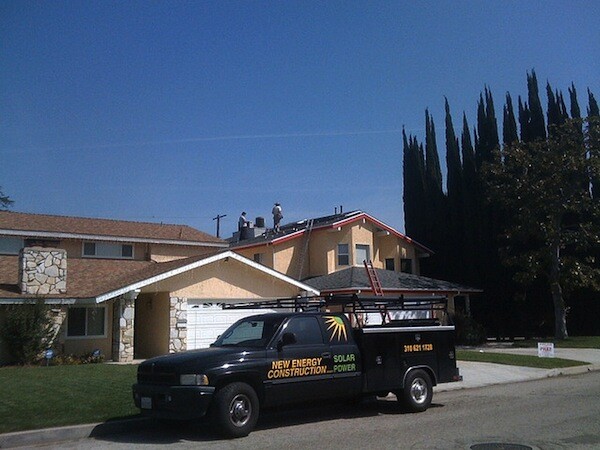Sunny Los Angeles Lags on Solar Energy, Says UCLA/USC Report

A few days before Thanksgiving three years ago, Los Angeles' mayor stood at a South L.A. solar panel manufacturing plant and announced an ambitious plan. "L.A. has everything it takes to make this work," said Antonio Villaraigosa of Solar LA, a vision to harvest the sun's energy for 1.3 gigawatts of power. "We have the sun in abundancy. We have the space. We have the largest municipal utility in the country."
But three years later, a major component of the plan is still lacking, according to a report released today by UCLA and USC, and presented by the L.A. Business Council Institute.
"The Los Angeles Department of Water and Power (LADWP) has failed to take advantage of the tremendous environmental and economic potential that solar power offers our region," reads the sobering report, entitled "Empowering LA's Solar Workforce: New Policies that Deliver Investments and Jobs."
Villaraigosa's 2008 goal was to generate 150 megawatts of solar power by 2016 through Feed-in-Tariff (FiT), a program that allows homeowners to install rooftop solar and sell surplus energy to the utility, affording them the opportunity to not only zero out a bill, but profit. Such a program still does not exist and the LADWP has since halved the goal.
"They must do this much faster than 75 megawatts," explained co-author JR DeShazo, who heads up UCLA's Luskin Center for Innovation. He thinks 600 megawatts over 10 years would be cost effective for ratepayers while creating local jobs, equivalent to 16,000 job-years along with $2 billion in local investment. 75 megawatts from FiT is the minimum LADWP must create under a 2009 state mandate.
"L.A. county has some utilities that are leaders," said DeShazo, pointing to cost-efficient programs in Burbank and Pasadena, "but LADWP needs to do more." He noted, however, that there are good reasons why the utility has been a behind, citing leadership changes, underfunding and political leadership in the city when it comes to solar issues.
Another solar rooftop program, one that offers rebates to homeowners who install systems, has so far generated about 23 megawatts. Unlike FiT, when a customer zeros out a bill and produces more energy than needed, giving it to LADWP, no profit is made.
Statewide, one gigawatt of rooftop power has been installed, the Environment California Research & Policy Center announced last week on the progress of a state's 2006 Million Solar Roofs Initiative. The law mandates 3 gigawatts of rooftop solar statewide by 2016. LADWP's contribution - 280 megawatts - was only 8% realized by July of this year.
With so much further to go, and in a climate of high unemployment, the UCLA/USC study in particular notes where the imbalance is found. "We have this wonderfully trained workforce," but sustained demand is not there, said USC co-author Mirabai Auer. The study found that areas in L.A. with the greatest potential for solar energy, thanks to rooftop space, are also in low-income neighborhoods where high unemployment and poverty are found. Many residents of those communities have already been trained in solar installation.
And that's where FiT fits in, the study says. The state has mandated rooftop energy, the residents need jobs and it is believed demand can increase with such a program. As the report's closing remarks state, "We have a ready market, and a ready set of policies."
Now all eyes are on the LADWP.
The photo used on this post is by Flickr user davidagalvan. It was used under a Creative Commons License.


